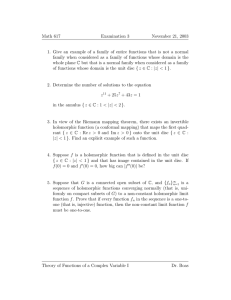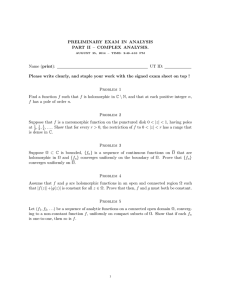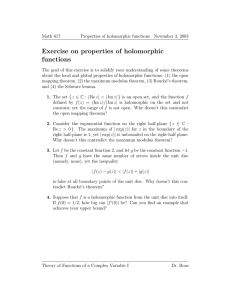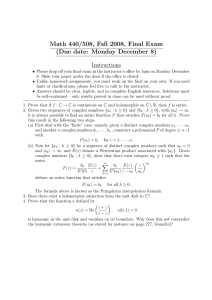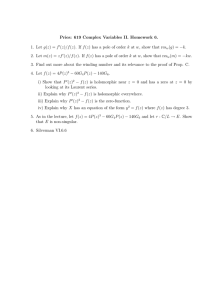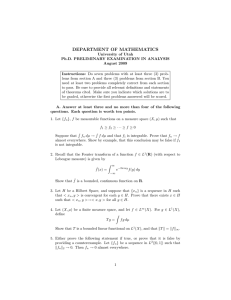Spring 2005
advertisement
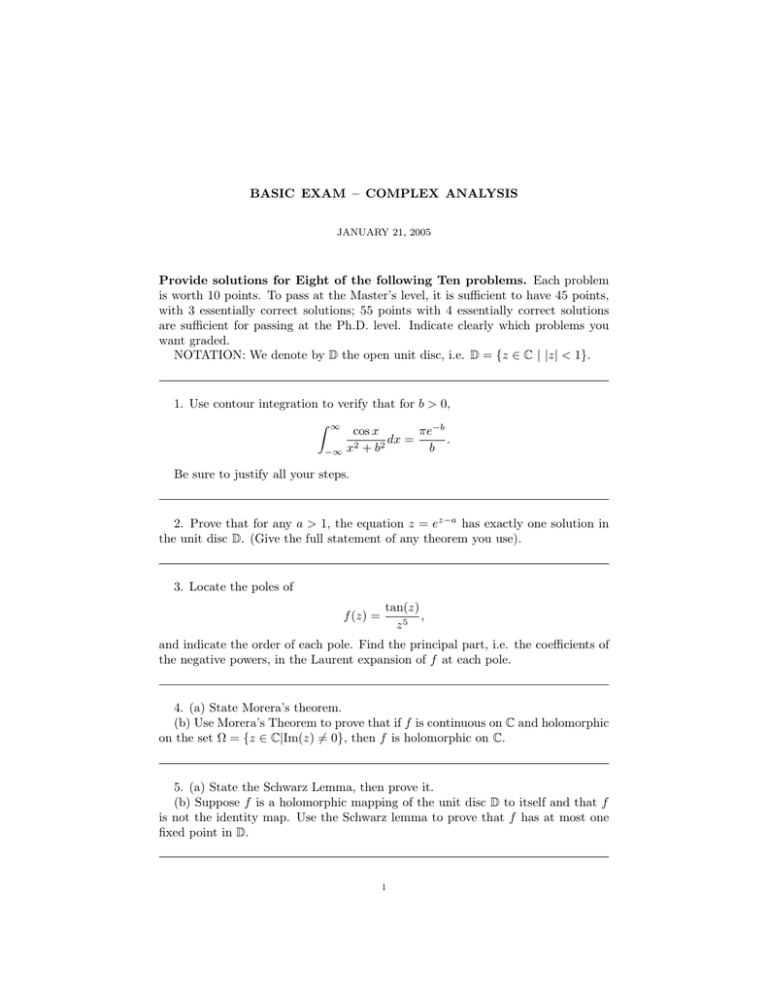
BASIC EXAM – COMPLEX ANALYSIS
JANUARY 21, 2005
Provide solutions for Eight of the following Ten problems. Each problem
is worth 10 points. To pass at the Master’s level, it is sufficient to have 45 points,
with 3 essentially correct solutions; 55 points with 4 essentially correct solutions
are sufficient for passing at the Ph.D. level. Indicate clearly which problems you
want graded.
NOTATION: We denote by D the open unit disc, i.e. D = {z ∈ C | |z| < 1}.
1. Use contour integration to verify that for b > 0,
Z ∞
cos x
πe−b
dx
=
.
2
2
b
−∞ x + b
Be sure to justify all your steps.
2. Prove that for any a > 1, the equation z = ez−a has exactly one solution in
the unit disc D. (Give the full statement of any theorem you use).
3. Locate the poles of
f (z) =
tan(z)
,
z5
and indicate the order of each pole. Find the principal part, i.e. the coefficients of
the negative powers, in the Laurent expansion of f at each pole.
4. (a) State Morera’s theorem.
(b) Use Morera’s Theorem to prove that if f is continuous on C and holomorphic
on the set Ω = {z ∈ C|Im(z) 6= 0}, then f is holomorphic on C.
5. (a) State the Schwarz Lemma, then prove it.
(b) Suppose f is a holomorphic mapping of the unit disc D to itself and that f
is not the identity map. Use the Schwarz lemma to prove that f has at most one
fixed point in D.
1
2
JANUARY 21, 2005
6. For each part of this problem, indicate whether the statement is true or false.
If true, give a proof; if false, provide a counterexample.
(a) There exists a holomorphic function f on the unit disc D such that f (1/n) =
f (−1/n) = 1/n3 for n = 2, 3, . . . .
(b) There exists a holomorphic function f on the punctured unit disc (D − {0})
such that g(z) = ef (z) has a simple pole at the origin.
(c) If f is a holomorphic function on the unit disc D which does not vanish at
any point of D, then there exists a function g holomorphic on D satisfying g 2 = f .
(i.e. every non-vanishing holomorphic function on D has a holomorphic square root
on D.)
7. Write down a conformal map that takes the “right-half” of the unit disc
R = {z ∈ D | Re(z) > 0} onto the unit disc D.
8. Use contour integration to prove that
Z
0
∞
x1/3
π
dx = √ .
1 + x2
3
Be sure to justify all your steps.
9. Evaluate
Z
cosn (z)
1
dz
2πi C z 3
where n ≥ 0 is a non-negative integer, and C is the unit circle |z| = 1 traversed
counterclockwise once.
10. (a) Give a careful statement of the Cauchy Inequalities, then prove them by
using the Cauchy Integral Formulas.
(b) State Liouville’s theorem. Use the Cauchy inequalities to prove Liouville’s
theorem.

